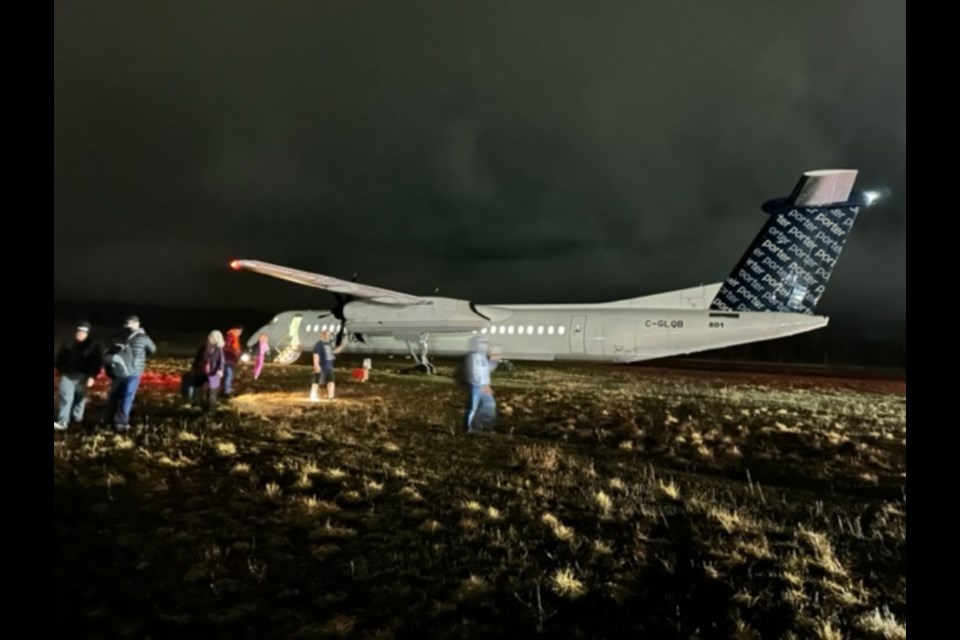A report released by the Transportation Safety Board has concluded that a momentary shift in focus by flight crew and poor situational awareness led to a rough night landing last year at the Sault Ste. Marie Airport.
On April 16, 2023 a Porter DHC-8-402 aircraft that departed from the Billy Bishop Airport in Toronto overshot a runway at the Sault Ste. Marie Airport and ended up in a grassy area. No one was injured in the incident.
The Transportation Safety Board investigated the scene shortly after the incident occurred and issued a report on Wednesday. The report analyzes causes and contributing factors, including runway situational awareness, landing technique, and runway surface texture, among other considerations.
"The flight crew were not initially aware of the aircraft's proximity to the end of the runway, and when they did become aware, the actions taken were not able to bring the aircraft to a stop before it reached the end of the runway, resulting in a runway overrun," the TSB said in the report.
The aircraft approached the 6,000-foot runway at about 9:22 p.m. with night lighting conditions and during light rain. The crew planned to touch down between 1,000 and 2,000 feet from the beginning of the runway, but a momentary shift in focus led to touchdown of the nose with only about 1,700 feet of runway remaining.
"Once the aircraft was over the runway, the flight crew's focus briefly shifted to other tasks and, with the limited visual cues available during the night landing, they did not recognize that the aircraft was further down the runway than expected," the TSB said.
The report states that runway overruns occur an average of 9.1 times per year, most of them during landings.
When the aircraft touched down, only light braking was applied, which the TSB said suggests the crew was not aware of the aircraft's proximity to the end of the runway.
"When the captain applied full braking with 850 feet of runway remaining, the aircraft should have been theoretically able to stop; however, braking performance was degraded, likely due to the runway surface texture on the last 300 feet of the runway and possible air contamination in the hydraulic system. As a result, the aircraft overran the end of the runway," the report said.
Investigators could not establish whether the use of reverse thrust would have avoided the overrun, but suggested the use of reverse thrust early in a landing roll would significantly increase aircraft deceleration, reducing potential for a runway overrun. TSB concluded that reverse thrust was not considered by the flight crew at any stage of the landing as a means to provide additional deceleration.
Actions taken by the TSB in response to the incident include additional training for the flight crew of the aircraft, along with various memos and bulletins throughout the industry to highlight landing procedures and the use of reverse thrust, among other recommendations.
Some airports use signage to indicate the amount of runway remaining, in increments of 1,000 feet. The report said that kind of signage can help to increase situational awareness for flight crews.
